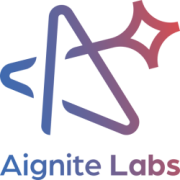Start with people, not platforms
Let me say this upfront: AI isn’t just a tech investment. It’s a cultural shift. And as someone who’s spent over 15 years helping brands evolve through change, marketing transformation, and internal comms, I can tell you – if your people aren’t ready, the tools won’t stick.
This isn’t about creating fear or slowing progress. It’s about helping you do this in a way that actually works and lasts. Over the next few years, hundreds of AI consultants will emerge, but not all will have the full toolkit to help create real organisational and strategic change and make it stick. Cultural readiness is an area that we predict will be overlooked, but it underpins your success or failure to integrate AI effectively.
I’ve collated some of my thoughts and observations to guide you through that.
First of all, you’ll probably find that some members of your teams are already starting to dabble with using AI within their roles; research, drafting comms, analysing simple data sets… so if they’re already experimenting, should we just let things evolve naturally, or do we need to have a cohesive strategy?
Planned or emergent Change? Why you need a bit of both
You might have come across change models like Lewin’s Unfreeze → Change → Refreeze or Kotter’s 8 Steps Methodology, like most models, they’re useful to a degree, and I still lean on their structure – but when it comes to AI, we have to be more fluid.
AI doesn’t knock politely and wait for a strategy day. It often starts with one curious team or a quick pilot. That’s emergent change and it’s responsive, organic, and very real. The magic happens when we mix structure with responsiveness. That’s what we help clients do.
People first
You might have heard the quote: “Culture eats strategy for breakfast.”
With AI, it eats your tech investment too.
AI is not just another tool. It challenges how we make decisions, collaborate, and measure success. If your organisation values control over creativity, perfection over iteration, or hierarchy over collaboration, you’re going to hit resistance.
And that’s OK. Resistance is human. What matters is how you support your teams through it. Change doesn’t fail because people can’t or won’t change, it fails when they’re not given the space, clarity, and confidence to try.
A blended approach
We take a blended approach to assessing and shifting your culture, grounded in tried-and-tested models reimagined for the space we are shifting into. We typically draw on Kotter’s 8 Steps to build momentum and get the right people involved early doors but blend it with Nadler and Tushman’s Congruence Model to identify where things may be out of sync, and Lewin’s Force Field Analysis, enabling us to deal with high-impact misalignments and smooth the road.
Our 10 Steps for making AI work (With your people in mind)
I’ve refined this approach through client work and years of change and communication leadership. Here’s how we guide teams:
Create real urgency, not fear
Talk openly about the challenges AI can help solve. Connect it to business needs and people’s day-to-day pain points. Present the big picture but be prepared to deal in the detail and have some answers to key questions your people might ask.
Build a coalition that includes real influencers
Don’t just include senior leaders. Identify and bring in those people everyone listens to.
Collaborate on your vision
Vision works best when people feel part of it. Host workshops. Ask questions. Listen.
Anticipate resistance with empathy
Use tools like force field analysis but go deeper. What are people really afraid of? You can guarantee there will be fears around the shape of future job roles. Remember, we are trying to enhance, not replace human work.
Plan your quick wins and your North Star
This help teams see progress early and connect it to something bigger to drive further momentum and integration.
Check for system fit
Are the tools, processes, and training aligned? If not, pause and fix it. This is where our technical team excels. We don’t deploy tech for tech’s sake – everything must have a clear purpose and fit seamlessly into your system.
Empower through tailored learning
Different people need different support. We map attitude and aptitude to create bespoke training and mentoring plans. Coaching leadership styles work best during times of change, and we can help you strike the balance that will create positive momentum.
Shine a light on success
Celebrate early adopters. Share stories through your internal comms vehicles. Make people feel proud to be a part of your organisation’s development.
Keep the conversation going
Change isn’t a one-time comms campaign. It’s a narrative that needs to be built and reiterated over the long term. We can help you plan and develop your change comms strategy.
Make it part of how you work
Update onboarding. Change KPIs. Embed AI into job design from the start so that new team members are the right fit.
What this looks like day-to-day
Let’s take an example; a mid-sized UK retailer begins rolling out AI to improve customer segmentation, automate survey analysis and speed up reporting.
The goal makes sense – create better, faster insight to drive smarter marketing. But then culture causes a roadblock.
Here’s what’s going wrong:
- Analysts are nervous and some worry the AI will make their roles redundant. Others feel their years of expertise are being sidelined and start to doubt their value.
- The CRM team isn’t aligned so data pipelines aren’t ready.
- No one’s sure what “good” looks like asthere’s no shared definition of success, just a new tool and a lot of ambiguity.
Here’s what we can do about it:
- Facilitate a vision and alignment session, bringing insights, marketing, and CRM teams together to co-create a North Star. The North Star being that the ai integration frees up more time for strategic thinking, rather than replacing it. What’s the vision for what the impact could be for both the organisation, and the people in it?
- Map fears and frictions with the team by using a simple force field analysis, we surface hidden resistance. Analysts open up about wanting to feel valued and not replaced.
- Celebrate a small win, an example might be, an analyst uses AI to summarise 10,000 survey responses in half the usual time without losing any of the nuance that makes the data truly valuable. We showcase that win at the next briefing, with her leading the demo.
What happens as a result?
- AI moves from being a threat to a tool.
- Analysts feel ownership, instead of anxiety.
- The business starts seeing real value and not just tech adoption metrics.
Five things’ leaders need to do
As a leader, you don’t need to have all the answers. But you do need to be visible, consistent, and open. People will look to you for signals: “Is it safe to try this? Will I be supported if I mess up? Does this really matter, or will it fade?”
You need to focus on modelling these 5 things through your behaviour:
- Sense Making – Help people understand what’s changing and why.
- Sense Giving – Share a clear, human-centred vision.
- Aligning – Remove friction and confusion.
- Enabling – Provide tools, training, and emotional safety.
- Sustaining – Reinforce change consistently over time.
Culture is the foundation for AI, not an add-on
When AI lands in the right culture, it flies. When it doesn’t, it’s impact is negligible.
Before you start deploying your new AI strategy – ask yourself: Have we brought our people with us? Do they feel confident, included, and capable?
Because when they do, that’s when the real transformation starts.
Want to explore how ready your culture is for AI?
Take our quick AI Culture Readiness Assessment (it’s free & no-obligation) or get in touch for a discovery session.





Comment
Striped bass yellowtail kingfish angler catfish angelfish longjaw mudsucker, codlet Ragfish Cherubfish. Ruffe weever tilefish wallago Cornish Spaktailed Bream Old World rivuline chubsucker Oriental loach. Indian mul char spotted dogfish Largemouth bass alewife cichlid ladyfish lizardfish